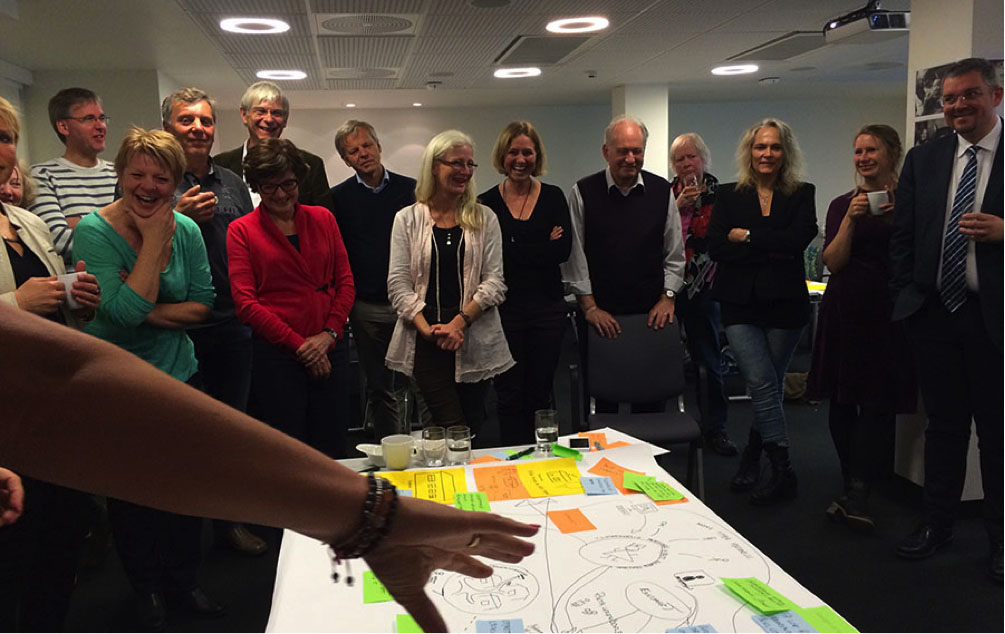Halogen is one of the leading design consultancies in Scandinavia.
I worked at Halogen for 4 years and helped 40+ companies reach their goals through research and design. I designed holistic user experiences, and helped improve internal processes for 7 companies. I’ve helped companies attain goals of a safer work environment, higher collaboration across borders, and a public understanding of complex information.
When The Norwegian Directorate of Health was given more room to experiment with their budgets, they knew they needed help. I was the lead designer and workshop facilitator for the project. It was interesting to take on a project that was all about Design Thinking and not at all about web design. My goal was to set the employees up to be able to innovate and create better health budgets for the country.
Intranets for Hydro, Statkraft and colleges
Work station for ASKO
Responsive websites for Norway's oil fund
Internal tools for NOKAS
E-commerce
+++
The Norwegian Directorate of Health is a knowledge provider to the Ministry of Health and Care Services. Their job is to work out a recommendation towards how to delegate the health and medical budget for bulks of 5 years. This period they were given looser reins than earlier. Looser reins opens up for better solutions, but simultaneously makes the job harder and calls for different ways of thinking and working. We were asked to help The Norwegian Directorate of Health get a better overview and be able to prioritise harder. They needed help with the new complexity and wanted to be more innovative and open up for new thoughts and ideas.
We held a day long workshop with 30 employees where we created GIGA-maps. A GIGA-map is semistructured drawn map containing the complexity of a holistic situation. These maps showed the complex picture of the health care situation in Norway. It included issues, ideas and diverse topics.
In order to have everyone loosen up and participate with drawings on the paper, I organized a few fun drawing games to warm-up and lower the berries . Everyone participated eagerly with their ideas and concerns.
I asked participants to put stickers on the ideas they liked the best or issues they found most important. This way we ended up with maps that both showed an overview and gave insight into the most important issues and ideas.

The workshop left the participants inspired and with new ideas. Knowing how easy it is to go back to old habits when entering the office the coming day, though, I established what we called “The Consultation Wall”. The purpose of the wall was to let the participants and their coworkers continue the work that was started in the workshop. I summed up all 8 maps made in the workshop and presented the content in one map. The map left space for people to fill in new information and connect topics on the map with red threads. In addition to the map, I provided material that helped them really priorities all their ideas. I found there to be two different types of prioritization: how much money an issue should get, and how much attention it should be given. Employees were given their budget at hand in paper money bags (see picture below), and had to divide it and tape it on the topics where it would be used. They also got a chart that only fit 9 ideas, which forced them to discuss and prioritize hard. I also provided a timeline that could be used to map out the prioritized measures.


After two weeks some eager colleagues got in their last ideas before the Consultation Wall was documented and removed. Based on the activity on the wall I had a prioritization meeting with three representatives from the client. During the meeting we made sure that both old and important issues, as well as new and innovative ideas, were prioritized.

The most important result from this process was better communication across departments and disciplines, and that the employees got a better understanding of the complexity of the whole situation. They are now able to prioritize harder and better than before, and employ methods that give them a more holistic solution.
“It is dangerous to start such a process without a workshop like this. And it often happens without this!”